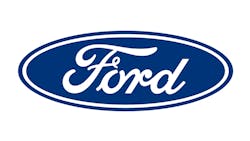Ford Updates Collision Position Statements to Enhance Vehicle Safety and Repair Standards
Ford Motor Company updated its collision position statements, reaffirming the company’s commitment to safe, proper, and repeatable repairs that restore vehicle performance, structural integrity, and advanced safety system functionality after a collision, according to a news release.
“At Ford, our Collision Repair Philosophy is simple: our customers drive everything we do,” said Andrew McInnes, FCSD, Collision & Global Brand Protection Manager, Ford Motor Company. “We’re committed to ensuring Ford and Lincoln owners receive quality, safe repairs guided by Ford OE repair procedures and completed with OE parts—so the vehicle performs as engineered long after it leaves the shop.”
The new additions to Ford’s collision position statements include:
- Broadened scope
- Guidance in engineering validation
- Warranty and Red Carpet Lease implications
- Concise format including support links
“These updates reflect the rapid pace of vehicle technology and our unwavering priority: the safety of our customers,” McInnes said. “We’ve clarified and expanded our guidance, so collision repairers, insurers, and customers have clear direction on what’s required to return Ford and Lincoln vehicles to pre-collision performance — especially as ADAS, electrification, and mixed-material construction become more prevalent.”
Ford and Lincoln position statements, repair procedures, and calibration requirements are available to collision professionals at:
- www.fordcrashparts.com
- http://www.fordtechservice.dealerconnection.com
- www.motorcraftservice.com
- www.oem1stop.com
Position statements are intended to be used with the full vehicle service information and are not a substitute for the official workshop manual procedures.
Ford encourages shops to maintain current training, equipment, and facility standards and to participate in the Ford Certified Collision Network. Customers should use Ford-approved diagnostics, calibration targets, and repair equipment to meet the requirements defined in service information.
“Today’s vehicles rely on precise materials, construction methods, and electronics,” McInnes said. “Following Ford’s OEM procedures and updated position statements is not only best practice — it’s essential to ensure crash performance, safety system accuracy, and customer satisfaction.”
